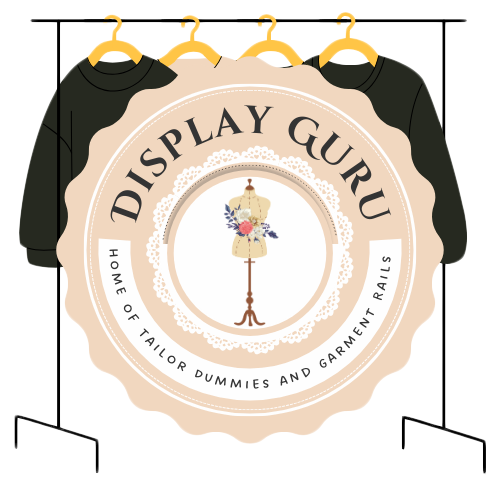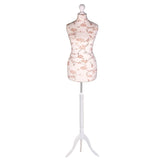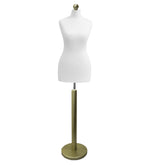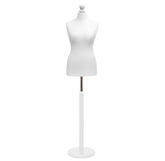9 Fresh Store Display Ideas to Boost Sales in 2025
In today's competitive retail landscape, a compelling in-store experience is no longer a luxury, it's essential for survival. The way products are presented can dramatically influence customer perception, engagement, and ultimately, purchasing decisions. Moving beyond traditional shelf stocking requires creativity and a strategic approach to visual merchandising. Excellent store display ideas do more than just showcase products; they tell a story, solve a customer's problem, and create a memorable brand environment.
This guide explores nine powerful and diverse store display ideas, offering actionable insights to help you transform your space, captivate your audience, and drive sales. We will delve into specific techniques, from leveraging digital technology to mastering the art of minimalist presentation, providing practical steps for implementation. Whether you're a small boutique owner, a fashion designer, or a visual merchandiser, these concepts will equip you to create displays that not only look stunning but also deliver measurable results. You will learn how to implement everything from interactive digital screens and storytelling window displays to effective cross-merchandising and vertical wall arrangements, ensuring your retail space works as hard as you do.
1. The Dynamic Mannequin: Creating Lifelike Scenarios
Move beyond static product displays by transforming your mannequins into central characters in a compelling story. This powerful store display idea involves posing mannequins in active, lifelike scenarios that resonate emotionally with your target audience. Instead of simply wearing clothes, your mannequins live in them, helping customers visualise the garments as part of an aspirational lifestyle. This technique is especially effective for showcasing the functionality, fit, and feel of apparel in a context that static poses cannot capture.
This approach turns a passive window shopper into an engaged observer. By creating a narrative, you invite customers to imagine themselves within the scene, making the products more desirable and relatable. The key is authenticity, creating vignettes that reflect the real lives and aspirations of your clientele.
How to Implement This Idea
- Create Aspirational Scenes: A sports shop could feature mannequins posed mid-run on a treadmill to showcase activewear performance. A boutique might create a sophisticated 'brunch outing' with seated mannequins in chic outfits, interacting around a small café table.
- Showcase Craftsmanship: For tailors and designers, this method highlights bespoke quality. Position an adjustable dress form in a workshop setting, mid-fitting, with pins and measuring tapes as props to demonstrate the meticulous creation process.
- Engage with Props: Use props that align with your brand's aesthetic to build a complete environment. This could range from luggage and travel guides for a holiday collection to books and coffee cups for a cosy knitwear display.
Key Insight: The goal is to sell a lifestyle, not just an item of clothing. Dynamic scenes make your products part of a larger, more appealing narrative that customers want to join.
For professionals seeking to create perfectly styled and fitted displays, using high-quality, pinnable body forms is essential. Explore a range of professional mannequins and tailor's dummies at Display Guru to find the ideal forms for bringing your creative visions to life.
2. The Power of the Pyramid: Structuring Visual Interest
The pyramid display is a timeless and highly effective store display idea that uses a triangular structure to guide the customer's eye. This classic merchandising technique involves arranging products with a wide base, narrowing towards a single focal point at the top. It creates a natural sense of order, stability, and visual hierarchy, drawing attention upwards and making the display feel organised and substantial.

This method is incredibly versatile, working for everything from folded apparel and accessories to packaged goods and cosmetics. By creating a clear visual path, the pyramid display prevents product arrangements from looking flat or cluttered. It allows you to feature a hero product at the apex while showcasing complementary items on the lower levels, encouraging customers to browse the entire selection.
How to Implement This Idea
- Establish a Strong Foundation: Build your display on a stable base using sturdy props like nesting tables, tiered stands, or simple wooden crates. Ensure the base is wide enough to support the full arrangement without risk of toppling.
- Place Key Products at Eye Level: The most valuable real estate in your pyramid is the middle section, directly at eye level. Position your bestsellers or high-margin items here to capture immediate attention and drive sales.
- Use Odd Numbers for Balance: Groupings of three, five, or seven items are often more aesthetically pleasing than even numbers. Apply this principle to smaller clusters within your larger pyramid structure to create a more dynamic and engaging composition.
- Mix Colours and Textures: Create visual depth by contrasting colours and textures. For example, pair smooth, folded cashmere jumpers with textured scarves and leather accessories to make each product stand out.
Key Insight: A pyramid display creates an intuitive visual journey for the customer. The structured shape guides their gaze naturally, ensuring they see your most important products first.
To build an effective tiered arrangement, selecting the right fixtures is crucial. You can find more information on choosing the best fixtures by exploring our guide to retail display stands, which offers further inspiration for creating impactful presentations.
3. Seasonal Themed Displays: Capturing Timely Relevance
Aligning your retail space with the calendar is one of the most powerful store display ideas for creating immediate connection and urgency. Seasonal themed displays transform your shop to reflect holidays, seasons, or local events, tapping into the customer's current mindset and spending habits. By incorporating timely colours, props, and products, you make your store a relevant destination, encouraging purchases tied to specific occasions like Christmas, summer holidays, or back-to-school season.
This strategy goes beyond simple decoration; it’s about curating an experience that feels fresh, exciting, and in-the-moment. A well-executed seasonal theme shows that your brand is dynamic and responsive, giving regular customers a compelling reason to visit frequently to see what’s new. It effectively leverages shared cultural moments to build an emotional rapport and drive sales.
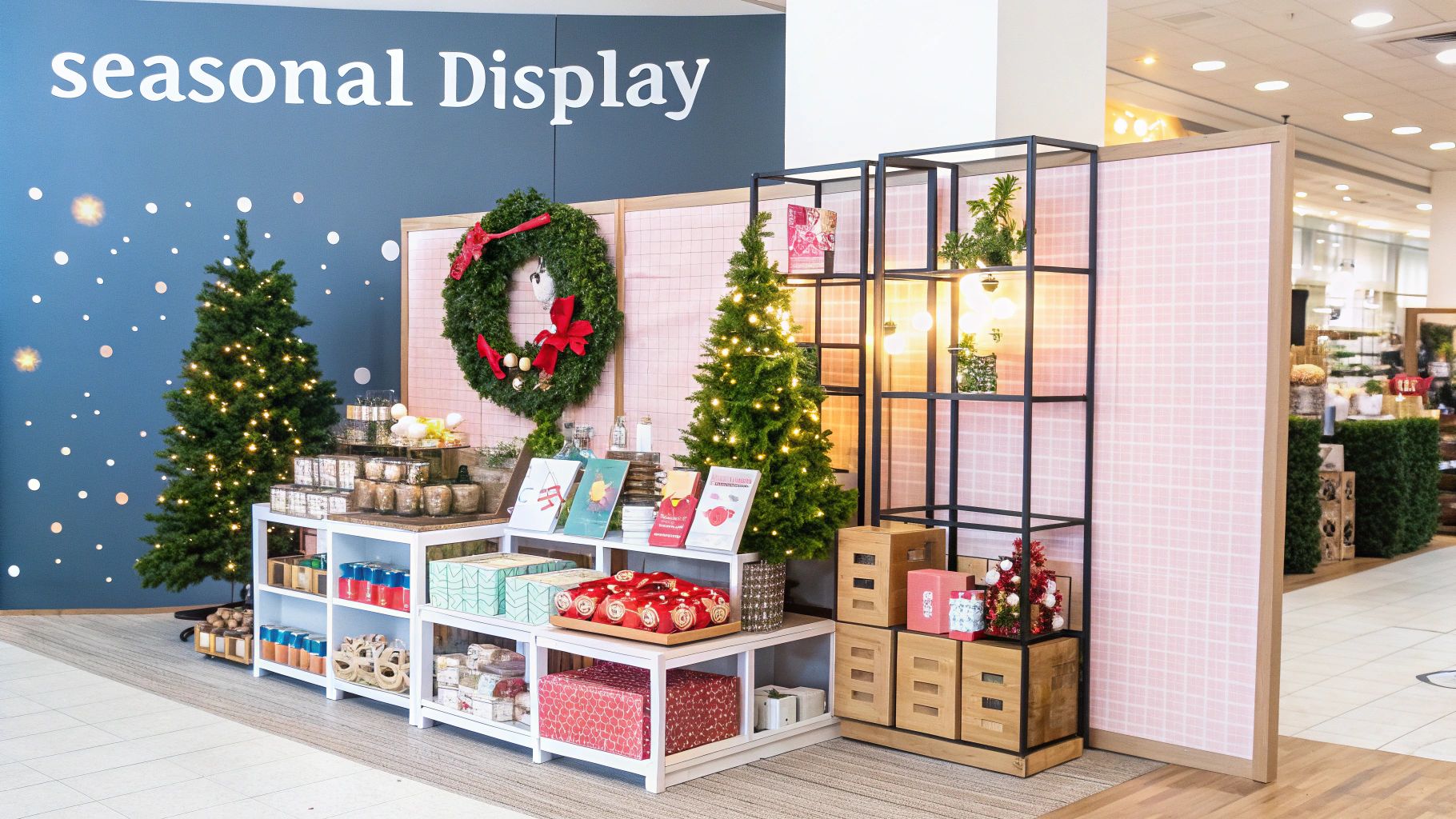
How to Implement This Idea
- Plan Ahead and Be Strategic: Begin planning your major seasonal displays 2-3 months in advance. This allows ample time to source props, plan product placement, and organise your visual merchandising strategy without last-minute stress.
- Use Modular and Reusable Elements: Invest in versatile display components like neutral-coloured plinths, adjustable shelving, or generic background panels. These can be easily updated with seasonal-specific vinyls, props, or lighting, saving time and money.
- Integrate Relevant Products: A seasonal display should be more than just aesthetic. For a spring theme, a fashion boutique should prominently feature lightweight jackets, floral dresses, and pastel-coloured accessories. This makes the display a direct driver of sales for timely merchandise.
Key Insight: A successful seasonal display makes your shop a part of the customer's seasonal celebrations and preparations, turning routine shopping into a festive and timely experience.
To perfectly present seasonal garments, from heavy winter coats to light summer fabrics, a robust and adaptable clothing rail is indispensable. Discover heavy-duty garment rails at Display Guru that provide the strength and versatility needed to support any themed collection.
4. Cross-Merchandising Displays: Encouraging Complete Solutions
Cross-merchandising is a powerful store display idea that involves strategically grouping complementary products from different categories together. This technique moves beyond selling individual items and instead offers customers a complete solution or lifestyle package. By placing related products in close proximity, you prompt shoppers to make additional, often unplanned, purchases, which can significantly increase the average transaction value.
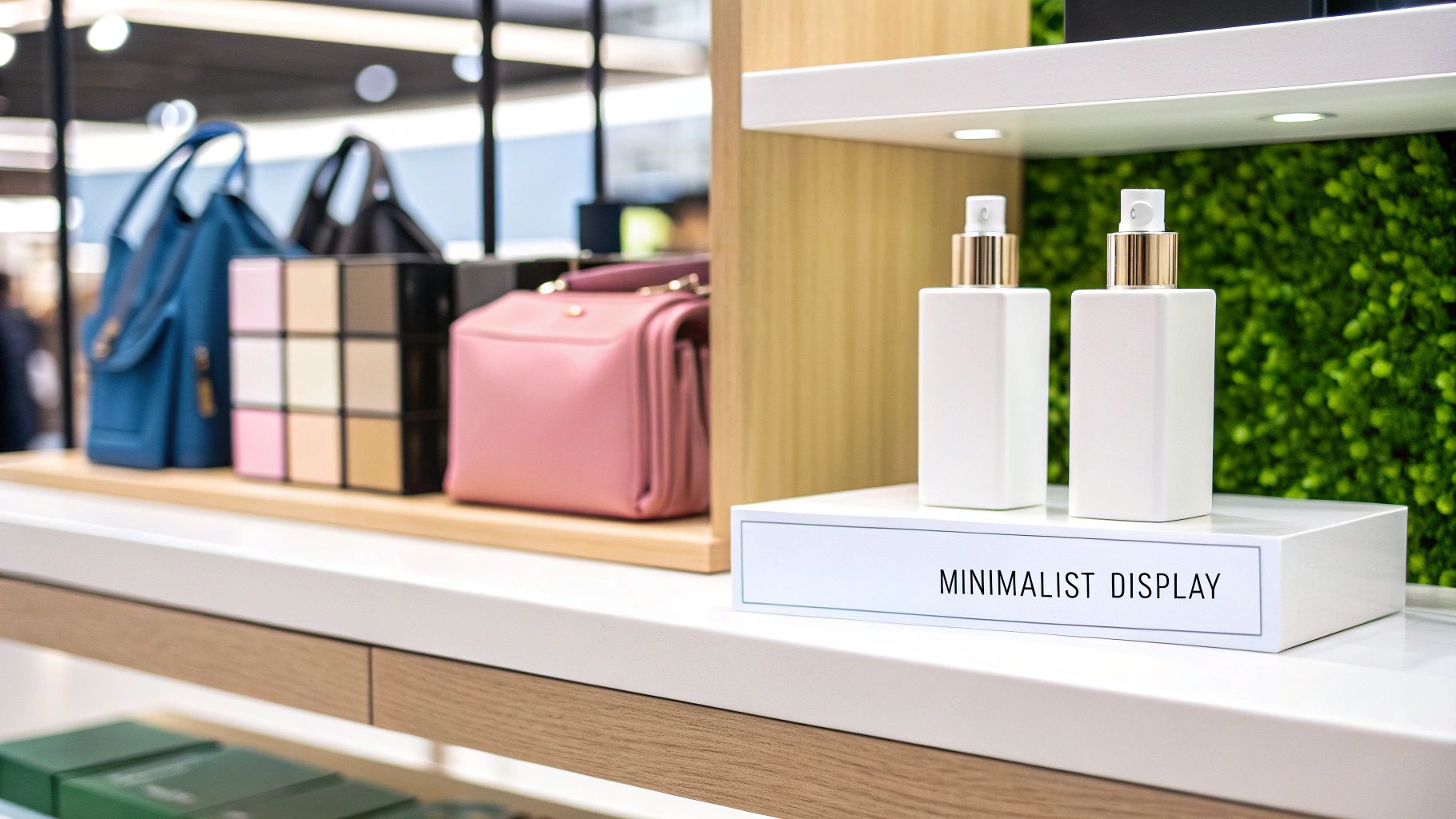
This method simplifies the shopping experience by anticipating the customer's needs. Instead of them having to search the store for a belt to go with a pair of trousers, the two are presented together. This convenience not only improves customer satisfaction but also subtly introduces them to products they may not have considered otherwise, making it an effective upselling tool.
How to Implement This Idea
- Create Logical Pairings: The foundation of this strategy is logical association. A clothing boutique could display a handbag, scarf, and pair of shoes next to a feature mannequin's outfit. Similarly, a haberdashery might place high-quality thread and specialist needles next to a display of delicate fabrics like silk or chiffon.
- Tell a Cohesive Story: Use signage and props to unify the display. For example, a "Weekend Getaway" themed gondola could feature casual outfits, a travel bag, a portable sewing kit for emergency repairs, and a travel guide. This creates a narrative that makes the bundled purchase more appealing.
- Leverage High-Traffic Areas: Place cross-merchandised displays in high-traffic zones or near the checkout counter to capture attention. A small basket of colourful buttons, zips, and ribbons near the cutting table can inspire impulse buys while customers wait.
Key Insight: Successful cross-merchandising is about making the customer's life easier. By presenting intuitive product combinations, you are not just selling more items; you are providing a valuable and convenient service.
Effective product grouping is a core principle of visual merchandising. To dive deeper into this and other related strategies, explore our guide to impactful shop display ideas for more professional insights.
5. Minimalist Clean Displays
Embrace the "less is more" philosophy with minimalist displays that exude sophistication and modernity. This powerful store display idea prioritises simplicity, clean lines, and generous negative space to create a calm, uncluttered shopping environment. By strategically showcasing fewer products, you allow each item's quality, design, and craftsmanship to command full attention, transforming merchandise into pieces of art.
This approach elevates the perceived value of your products and the overall brand identity. It communicates confidence and luxury, suggesting that the items are so exceptional they don't need excessive promotion to shine. A minimalist aesthetic is particularly effective for high-end fashion, designer goods, and tech products where the focus is on superior design and function.
How to Implement This Idea
- Focus on Hero Products: Select only your most compelling or significant items for display. A boutique might present a single, impeccably styled handbag on a clean white plinth, while a designer could feature one signature gown on a sleek, standalone garment rail.
- Invest in Quality Fixtures: The fixtures themselves become part of the design. Use high-quality materials like polished metal, natural wood, or clear acrylic for shelving and racks. Ensure every element is pristine, as imperfections are more noticeable in a sparse setting.
- Use Strategic Lighting: Lighting is critical in a minimalist layout. Use focused spotlights to draw the eye directly to the product, creating drama and highlighting details like texture and colour. This technique helps guide the customer's journey through the space.
Key Insight: Minimalist displays shift the focus from quantity to quality. A clean, curated environment eliminates distractions, allowing customers to appreciate the finer details of each product and reinforcing a premium brand image.
Executing a minimalist concept flawlessly requires a deep understanding of spatial composition and product hierarchy. To master these techniques, explore the core principles in our detailed visual merchandising guidelines at Display Guru and learn how to create impactful, uncluttered presentations.
6. Storytelling Window Displays
Transform your shopfront from a simple product showcase into a captivating theatrical stage. This powerful store display idea involves creating elaborate window displays that tell a narrative story through creative scenes, props, and strategic product placement. By crafting a compelling story, you can forge an emotional connection with passersby, inviting them into a world your brand has created and positioning your products within an aspirational lifestyle context.
This technique moves beyond just showing what you sell; it shows the life and soul behind the products. Legendary displays by retailers like Bergdorf Goodman and Anthropologie are not just windows, they are destinations that generate buzz and draw crowds. A well-executed storytelling window communicates your brand’s identity, creativity, and values before a customer even steps inside, making your store a must-visit landmark.
How to Implement This Idea
- Develop a Central Theme: Base your display on a clear narrative concept. This could be a seasonal story (e.g., 'A Midsummer Night's Dream' for a summer collection), a cultural event, or a whimsical fantasy scene. The key is to ensure the story aligns with your brand’s core identity.
- Use Props to Build the World: Invest in high-quality props, backdrops, and lighting to construct your scene. For a travel-themed display, this might involve vintage suitcases, maps, and foreign currency. For a fashion boutique, it could mean creating a miniature art gallery where mannequins are the patrons.
- Make Products the Heroes: While the scene sets the stage, your products must remain the central focus. Integrate them seamlessly into the narrative. A luxury handbag might be the coveted object in a spy-themed thriller scene, or a bespoke suit could be the attire for a character attending a grand opera.
Key Insight: A storytelling window sells an experience, not just a product. It creates a memorable, shareable moment that builds brand loyalty and transforms your shopfront into a powerful marketing tool.
Executing a narrative-driven display requires careful planning and a deep understanding of visual composition. For more inspiration on creating your own compelling scenes, you can explore a wide range of window display ideas on our blog.
7. The Interactive Demo Station: Building Trust Through Experience
Move beyond passive viewing and invite customers to actively engage with your products through a dedicated demonstration station. This powerful store display idea creates an interactive space where shoppers can test, trial, and experience items firsthand. By allowing hands-on interaction, you demystify product features, reduce purchase anxiety, and build significant customer confidence. This approach transforms the shopping journey from speculative to experiential, making it an invaluable tool for electronics, cosmetics, tools, and high-end homeware.
An interactive station proves a product's value far more effectively than any sign or salesperson's pitch ever could. When customers can see, hear, or feel how something works for themselves, their connection to the item deepens, and the path to purchase becomes much clearer. The goal is to create a controlled, educational, and enjoyable environment that empowers customers to make an informed decision.
How to Implement This Idea
- Establish a "Try-Before-You-Buy" Zone: A beauty retailer like Sephora excels at this with makeup and skincare stations where customers can sample products. Similarly, a hardware shop could set up a small workbench for customers to test the grip and weight of different power tools.
- Schedule Expert-Led Demonstrations: For more complex products, host scheduled demonstrations. A kitchenware store might run a short weekend class showing off a new blender's capabilities, or a tech shop could have an expert guide customers through a new camera's features.
- Keep it Clean and Functional: The success of a demo station relies on its upkeep. Ensure all trial products are clean, fully charged, and in perfect working order. Provide clear, simple instructions and have knowledgeable staff nearby to assist and answer questions.
Key Insight: A demonstration station shifts the sales focus from persuasion to proof. Allowing customers to validate a product's quality and functionality for themselves is one of the most effective ways to secure a sale and build lasting brand loyalty.
To properly showcase intricate products or materials under demonstration, excellent lighting and stable presentation are crucial. Consider using adjustable display stands and risers from Display Guru to position items perfectly for customer interaction and visibility.
8. Endcap Power Displays: Maximising High-Traffic Zones
Capitalise on prime retail real estate by creating powerful endcap displays at the end of your aisles. This classic store display idea transforms these high-visibility locations into strategic promotional tools. Endcaps are perfectly positioned to capture customer attention as they navigate your store, making them ideal for launching new products, highlighting seasonal promotions, or encouraging impulse purchases. This method interrupts the natural flow of shopping and directs focus onto a curated selection of items.
By treating these spaces as mini-billboards, you can effectively communicate value and urgency. A well-executed endcap display not in a grocery store but in a fashion or craft setting can tell a specific product story, whether it’s about a new fabric collection, a special offer on sewing accessories, or a featured designer’s patterns. It's a focused approach that drives sales for specific, high-priority merchandise.
How to Implement This Idea
- Create Thematic Stories: A haberdashery could build an endcap around a "Summer Wedding" theme, featuring delicate lace, silk threads, and pearl buttons. A design studio might use it to showcase a new colour palette, displaying fabrics, trims, and corresponding mannequins all in that specific hue.
- Highlight Promotions and Value: Use bold, clear signage to announce special offers, such as "Buy One, Get One Free" on popular dressmaking patterns or a clearance on last season's textiles. Ensure the pricing is simple and easy to understand at a glance.
- Rotate and Refresh: Keep your endcap displays dynamic by rotating the featured products every two to four weeks. This creates a sense of newness and encourages repeat customers to check what’s on offer. Track sales data to see which displays perform best.
Key Insight: Endcaps are not just shelving; they are powerful marketing platforms. Use them to tell a clear, concise, and compelling product story that a customer can grasp in seconds.
To make your endcap displays truly effective, ensure they are always well-stocked and visually appealing. Using professional-grade shelving and signage can elevate the presentation. Explore a variety of shop fittings and display equipment at Display Guru to build the perfect foundation for your high-impact endcaps.
9. Vertical Wall Merchandising: Maximising Your Visual Footprint
Transform underutilised wall space into a powerful merchandising tool with vertical displays. This store display idea involves arranging products from floor to ceiling using a combination of shelving, gridwall panels, and pegboards. By thinking vertically, you not only maximise your inventory capacity but also create an impactful, organised, and visually striking presentation that draws the eye upward and makes a small retail space feel larger and more abundant.
This method is particularly effective for stores with extensive product ranges, such as hardware shops or specialty hobby stores. It allows customers to easily scan a wide variety of items at once, encouraging exploration and comparison. A well-organised vertical display acts as both storage and a catalogue, presenting a comprehensive view of your offerings in a clean, accessible format.
How to Implement This Idea
- Create Zones with Purpose: Designate specific wall sections for different product categories. For example, a home goods store could have one vertical display for kitchen utensils and another for cleaning supplies, using clear signage to guide customers.
- Prioritise Eye-Level Placement: Position your best-selling or high-margin products at eye level (roughly 1.5 metres from the floor) to capture immediate attention. Place heavier items on lower shelves for safety and lighter or less-frequently purchased items higher up.
- Maintain Visual Cohesion: Use consistent spacing between shelves and hooks to avoid a cluttered look. Group products by colour, size, or function to create a visually pleasing and logical arrangement that simplifies the shopping experience.
Key Insight: Vertical merchandising turns your walls into your most efficient salespeople. It organises vast amounts of stock into a shoppable library, making it easy for customers to find what they need while discovering new items.
While fixed wall displays are excellent for core inventory, integrating movable units can add flexibility. For temporary promotions or featured collections, portable clothing racks offer a versatile solution that complements your permanent fixtures. Discover how to enhance your space with adaptable displays by reading our guide on using a portable clothing rack at Display Guru for dynamic merchandising.
Store Display Ideas Comparison Matrix
| Display Type | Implementation Complexity 🔄 | Resource Requirements ⚡ | Expected Outcomes 📊 | Ideal Use Cases 💡 | Key Advantages ⭐ |
|---|---|---|---|---|---|
| Interactive Digital Displays | High - requires technology integration and maintenance | High - hardware, software, skilled staff | High engagement, personalized experiences, data collection | High-traffic retail locations, tech-savvy customers | Personalized interaction, real-time updates, data insights |
| Pyramid Product Displays | Low - simple physical arrangement | Low - basic materials and shelving | Maximizes product visibility, guides natural eye movement | Grocery, cosmetics, seasonal product showcasing | Cost-effective, easy to maintain, visually stable |
| Seasonal Themed Displays | Medium - frequent redesign and refreshes | Medium to high - decorations and labor | Creates urgency, drives seasonal sales | Holiday promotions, seasonal product launches | Emotional connection, boosts seasonal relevance |
| Cross-Merchandising Displays | Medium - requires planning and product knowledge | Medium - signage and staff training | Increases basket size, improves convenience | Complementary products, solution-based retail | Boosts sales, enhances product discovery |
| Minimalist Clean Displays | Medium - precise styling and maintenance | Medium - quality fixtures and lighting | Premium perception, reduces decision fatigue | Luxury brands, high-quality products | Highlights product quality, timeless aesthetic |
| Storytelling Window Displays | High - creative conceptualization and build | High - props, design, labor | Emotional connection, brand differentiation | Flagship stores, brand storytelling | Strong brand identity, social media buzz |
| Product Demonstration Stations | Medium to High - staff training and setup | Medium to high - demo inventory and staffing | Reduces purchase uncertainty, builds confidence | Tech products, cosmetics, experiential retail | Enhances customer confidence, memorable experiences |
| Endcap Power Displays | Low - strategic placement but requires updates | Low to medium - signage and stock | High visibility, impulse purchase stimulation | Promotions, new products, impulse buys | Maximum exposure, easy to update |
| Vertical Wall Merchandising | Medium - design for space optimization | Medium - shelving and fixtures | Maximizes display space, organizes inventory | Hardware, tools, office supplies | Space-efficient, flexible, clear product visibility |
Putting Your Plan into Action
The journey through these nine distinct store display ideas reveals a powerful truth: effective visual merchandising is both an art and a science. From the high-tech allure of interactive digital screens to the foundational, storytelling power of a well-dressed mannequin, each concept offers a unique lever to pull. We have explored how a simple pyramid structure can create visual harmony, how seasonal themes can generate timely excitement, and how minimalist displays can communicate sophistication and quality. The goal is not to implement every idea at once, but to strategically select the ones that resonate most deeply with your brand’s identity, your specific products, and the physical layout of your retail space.
From Inspiration to Implementation
Translating these concepts from a list into a tangible, sales-driving reality is the critical next step. The most impactful retail environments are never static; they are dynamic ecosystems that respond to new stock, changing seasons, and evolving customer behaviours. Think of your store as a gallery and your displays as the curated exhibitions within it. A fashion designer might use a minimalist rail to showcase a core collection, while employing a dramatic storytelling window display to launch a new couture piece. A boutique owner could use endcap power displays for high-margin accessories and a cross-merchandising table to show customers how to build a complete outfit.
Key Takeaway: The ultimate aim is to create a cohesive and compelling journey for your customers. Your displays should not just showcase products; they should guide, inform, and inspire a purchase. The right combination of store display ideas transforms a simple shopping trip into a memorable brand experience.
Your Actionable Next Steps
To begin transforming your space, consider this structured approach:
- Audit Your Current Space: Walk through your shop from a customer’s perspective. What is the first thing you see? Where do your eyes naturally travel? Identify underutilised areas like vertical walls or endcaps that present an opportunity for a new display.
- Select One or Two New Ideas: Do not overwhelm yourself. Choose one major display to overhaul, perhaps your main window, and one smaller internal display, like a product demonstration station. Focus on executing these flawlessly.
- Measure the Impact: Track the results. Monitor footfall near the new display, track sales of the featured products, and even ask customers for their feedback. Use this data to determine what works and what doesn't, allowing you to refine your strategy for the next update.
- Invest in Quality Foundations: Professional-grade tools are non-negotiable for a polished look. High-quality tailor’s dummies, sturdy garment rails, and versatile display bins form the backbone of great merchandising. Investing in durable, well-designed equipment ensures your brilliant store display ideas are executed with the professionalism they deserve.
By embracing this iterative process of planning, implementing, and analysing, you move beyond simply arranging stock. You begin to architect an environment that captivates attention, communicates value, and ultimately, drives commercial success.
Ready to bring your creative store display ideas to life with professional-grade equipment? Display Guru offers a comprehensive range of high-quality mannequins, durable garment rails, and versatile retail fixtures designed to help you build stunning, effective displays. Explore our collection at Display Guru and find the foundational tools you need to transform your retail space today.
